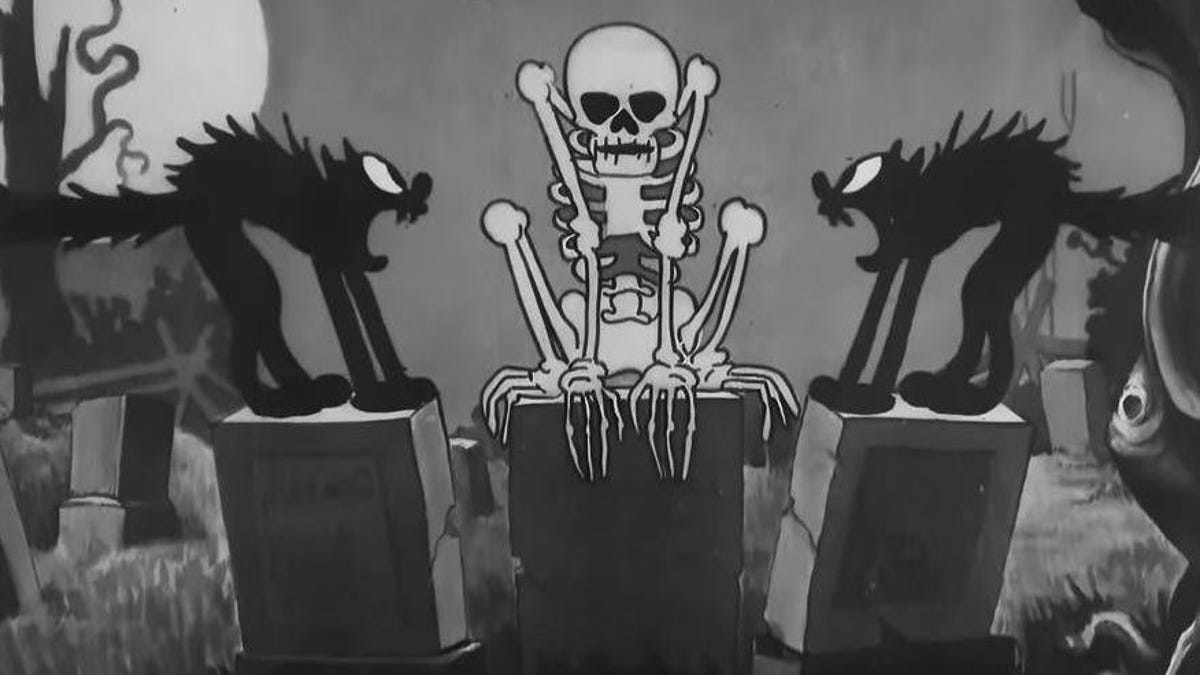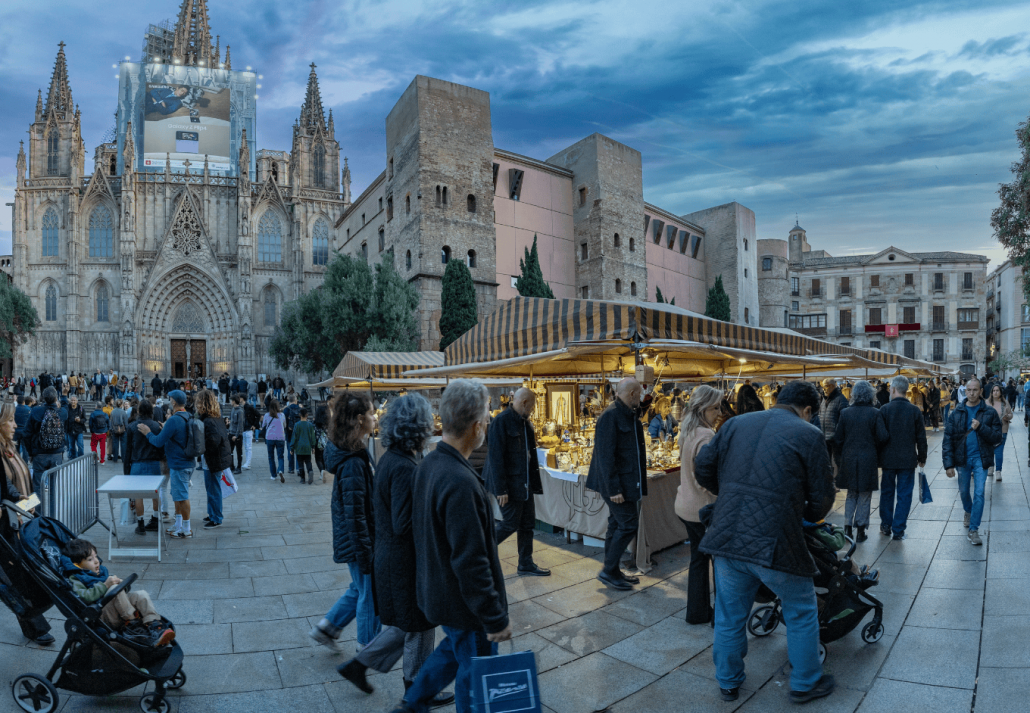12 Things You Didn't Know About Halloween
I am a Halloween-scholar with a PhD. in witchology from Virginia Tech*, and I want to share my knowledge with you. These 12 Halloween facts and “didya knows?” cover everything you ever wanted to know about the holiday: pumpkins,...


I am a Halloween-scholar with a PhD. in witchology from Virginia Tech*
, and I want to share my knowledge with you.
These
12 Halloween facts and “didya knows?” c
over everything you ever wanted to know about the holiday:
pumpkins, black cats, and novelty music.
I
sn’t that what Halloween is all about?
2 / 14
The ancient history of Halloween
The ancient history of Halloween

Illustration: matrioshka (Shutterstock)
It’s fitting that the origin of Halloween is somewhat mysterious. It originated with the Samhain celebrations of the Celts and Druids in Ireland, England, and Northern France around 2,000 years ago.
Samhain, t
he Celtic New Year, was celebrated on Nov.
1
, and marked the transition between summer and winter. Because neither the Druids nor Celts left a written record, what we know about how Samhain was marked is based on reports of the occupying Romans, but it apparently was celebrated by lighting large bonfires and sometimes wearing masks. The Celts believed the spirits of the dead would return to their homes during the Samhain festival too.
In the 7th Century, t
he Catholic c
hurch moved All Saint’s Day, aka All Hallows’ Day, from May 13 to Nov.
1
, probably in an effort to “C
hristianize” the pagan holiday. The day before became known
as Hallow’s Eve, and eventually Halloween.
3 / 14
The modern history of Halloween
The modern history of Halloween

Photo: Mobz (Shutterstock)
Halloween was celebrated in various ways in Europe throughout the Middle Ages and into the Renaissance, but it was not universally marked in the United States. Puritan settlers didn’t like anything awesome, so they didn’t celebrate Halloween. They didn’t celebrate Christmas or Easter either.
Some European Halloween customs did live on sporadically in the more “liberal” colonies down south, where Halloween parties celebrating the harvest
consisted of ghost stories and I assume lots of drinking. Halloween didn’t really catch on until the mid 1800s, when a huge influx of Irish people immigrated to the United States and brought their folk holiday with them.
4 / 14
The origin of trick-or-treating
The origin of trick-or-treating

Photo: Yuganov Konstantin (Shutterstock)
Trick-or-treating is the modern expression of a practice that dates back at least to Ancient Greece. Putting on a costume, visiting your neighbors, and expecting to be invited in for some cake or something has been a common way of celebrating various holidays and festivals since history began.
“Guising,” short for “disguising,” began to be associated specifically with Halloween in the early 1900s. The phrase “trick or treat” seems to have originated in Canada. It was first used in print in 1917 in Ontario’s Sault Daily Star, which described costumed children going door-to-door on Halloween and promising not to commit mischief if given a treat.
5 / 14
Elizabeth Krebs: The cranky grandmother of Halloween
Elizabeth Krebs: The cranky grandmother of Halloween
Elizabeth Krebs, of Hiawatha, Kansas, is an unsung hero of Halloween, but she wasn’t fond of children. The founder of the Hiawatha Garden Club, Krebs loved her flowers most of all, but in Kansas in the early 1900s, the local youths celebrated “mischief night,” the night before halloween, by running rampant through town, inevitably destroying Krebs’ carefully planted flower beds.
Embodying the can-do spirit of the American midwest, Krebs fought the vandals with love by organizing the first Halloween parade in U.S. history. The Hiawatha Halloween Frolic of 1914 featured a parade, a costume contest, treats, and music, all meant to distract the youth from wrecking Ms. Krebs’ precious posies. The event caught on, and Halloween parades and parties spread across the country, so you can thank Ms. Krebs for your local parade. Or thank the rebellious teens, I guess.
Halloween: The movie
Released in 1978, John Carpenter’s Halloween inspired the “slasher” genre that took over horror films in the 1980s. It was produced for only $300,000 and grossed over $47 million (around $150 million in today-money), placing it among the most profitable independent films ever made. Halloween has spawned 12 other “official” Halloween movies (although some would argue that Halloween III doesn’t count; it’s set around Halloween, but has nothing to do with the other Halloween films) and thousands of imitators.
7 / 14
Christmas used to be the “ghost story” holiday
Christmas used to be the “ghost story” holiday

Illustration: Dave Rheaume Artist (Shutterstock)
Ghost stories (and their modern equivalent, horror movies) are firmly enmeshed with Halloween culture, but Christmas was actually the ghost story holiday in Victorian England.
“Whenever five or six English-speaking people meet round a fire on Christmas Eve, they start telling each other ghost stories,” Jerome K. Jerome wrote in 1891. Despite the most famous Christmas story, “A Christmas Carol,” being a straight-up ghost story, the tradition has nearly entirely died out.
8 / 14
Do witches/satanists sacrifice black cats on Halloween?
Do witches/satanists sacrifice black cats on Halloween?

Photo: Evgenia Lushenkova (Shutterstock)
Until recently, humane societies and animal shelters routinely restricted cat adoptions around Halloween, especially adoptions of black cats. This was partly based on the belief that pagans, satanists, druids, witches, and/or warlocks would adopt dark kitties in order to sacrifice them in unspeakable rites on Samhain.
As awesome as it would be to live in a world where this happens, in our boring reality, it doesn’t. Satanists don’t adopt or catnap black kitties at this time of year either. Satanists like cats, generally, and they’re also super boring, as anyone who’s ever been buttonholed by a satanist at a party can tell you. The belief probably stems from reports of witches with black cat familiars that date back to medieval times.
There is a non-folkloric reason pet adoption places sometimes give for limiting adoptions of black cats around Halloween, though: It is feared that some people adopt black cats as spooky decor for Halloween, only to abandon them on Nov. 1. I haven’t been able to find a documented case of this happening, though, so it’s probably hearsay too.
9 / 14
They are lying to you about pumpkins
They are lying to you about pumpkins

Photo: Andrii Medvediuk (Shutterstock)
The pumpkin is not a vegetable. It is a fruit. Technically, the pumpkin is a berry.
Pumpkins are a product of the seed-bearing structure of a flowering plant, hence a fruit. Botanically, berries are defined as “simple, fleshy fruit that usually has many seeds.” Like a pumpkin.
10 / 14
Illinois: America’s pumpkin state
Illinois: America’s pumpkin state

Photo: Michael Heimlich (Shutterstock)
Halloween is in the middle of decorative gourd season, motherfuckers, and most of Halloween’s most beloved gourds—pumpkins—come from Illinois, our gourdiest state. It’s not a close contest, either: Illinois grows twice as many pumpkins, both the ornamental and the pie-filling kinds, as second place California.
11 / 14
Some pumpkins weigh as much as a Toyota Corrola
Some pumpkins weigh as much as a Toyota Corrola

Photo: Roman023_photography (Shutterstock)
I don’t want to kink-shame or anything, but there are people out there who devote their lives to growing massive pumpkins. The largest ever weighed nearly one and a half tons. Grown by Italian gourd-fetishist Stefano Cutrupi, the prize winning berry tipped the scales at 2,702 pounds at the the Big Pumpkin Festival in Peccioli, Italy in 2021. (I attend this festival yearly.)
12 / 14
All about “The Monster Mash,” Halloween’s unofficial anthem
All about “The Monster Mash,” Halloween’s unofficial anthem
Explicitly Halloween-related songs never caught on like Christmas carols, so the closest thing we have is “The Monster Mash,” Halloween’s unofficial anthem. (Okay, maybe Rockwell’s “Somebody’s Watching Me” comes close.) A product of the monster-craze of the 1960s, “Monster Mash” was written and performed by Bobby “Boris” Pickett as a way to show off his monster-impersonation skills and spoof the “dance craze” songs that were popular when at the time. “Monster Mash” hit number one on the billboard charts upon its release in 1962, and re-entered the charts in 1970 and 1973.
Pickett continued recording novelty records until the 2000s but never recaptured the original magic. Among Pickett’s follow-up recordings from the 1960s:
“Monster’s Holiday”“Monster Motion”“Blood Bank Blues”“Me and My Mummy”“Werewolf Watusi”“The Monster Swim”Later Pickett recordings include 1985’s “Monster Rap,” “It’s Alive” from 1993, and 2005’s “Monster Slash.”
13 / 14
Halloween’s hottest trend: Costumes for pets
Halloween’s hottest trend: Costumes for pets

Photo: Ezzolo (Shutterstock)
I have looked toward the future of Halloween, and all I can see is a pug in a dandelion outfit. These days, everyone is putting costumes on their pets. In 2019, 17% of Americans said they planned to put an outfit on their animal, up from “only” 12% in 2012. Spending on costuming for pets is approaching a half-billion dollar a year, according to the National Retail Federation.
Dogs and cats in costumes are delightful to almost everyone, but some veterinarians warn agains the practice. A spokesperson for the British Vet Association said, “Dressing up animals or otherwise unnaturally changing their appearance is not only unnecessary and potentially harmful, but in some cases can also prevent pets from expressing their natural behaviors and from using their body language to communicate.”
On the other hand, it’s adorable and your cat loves wearing a funny hat, I promise.

 Fransebas
Fransebas 































